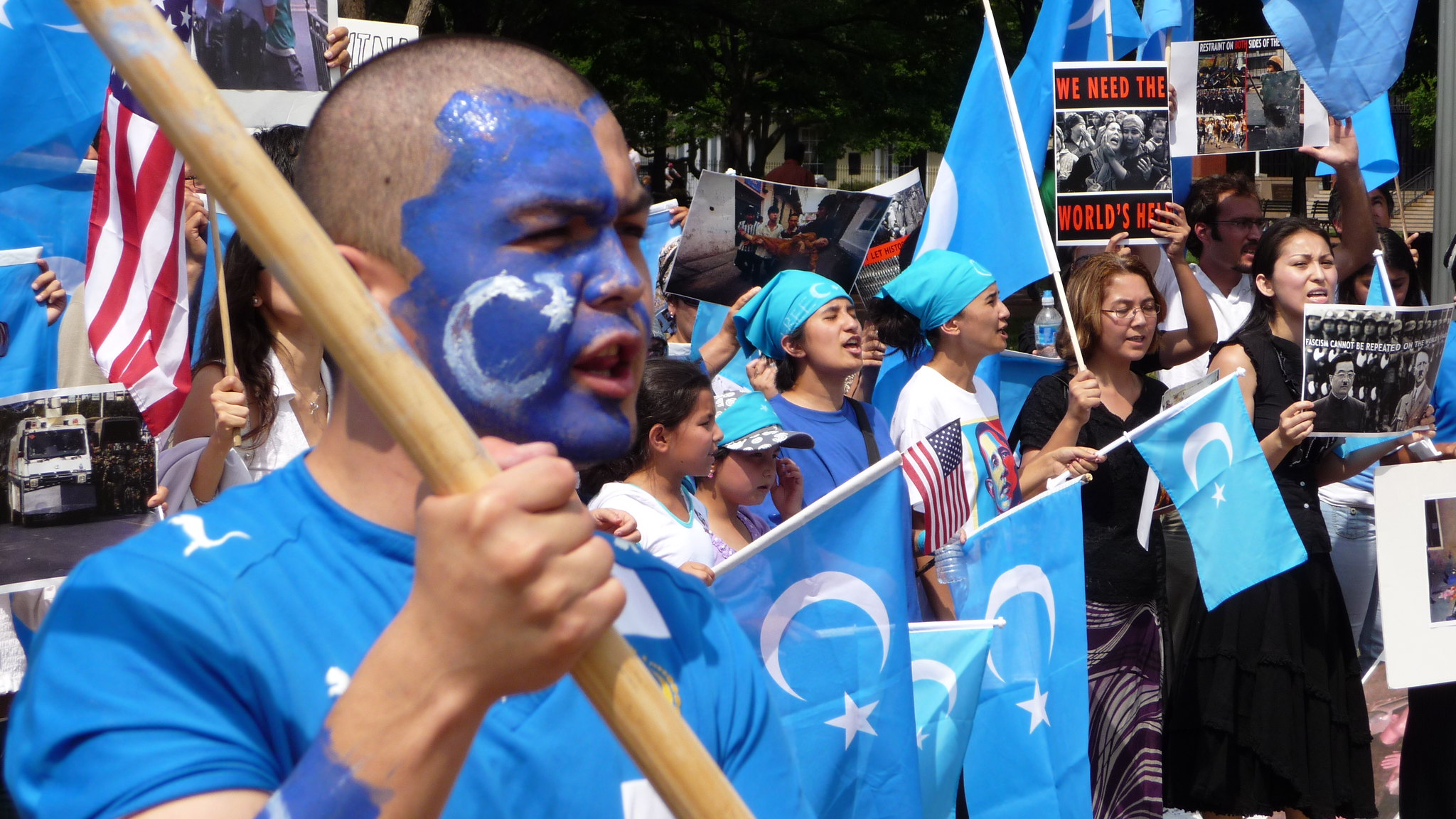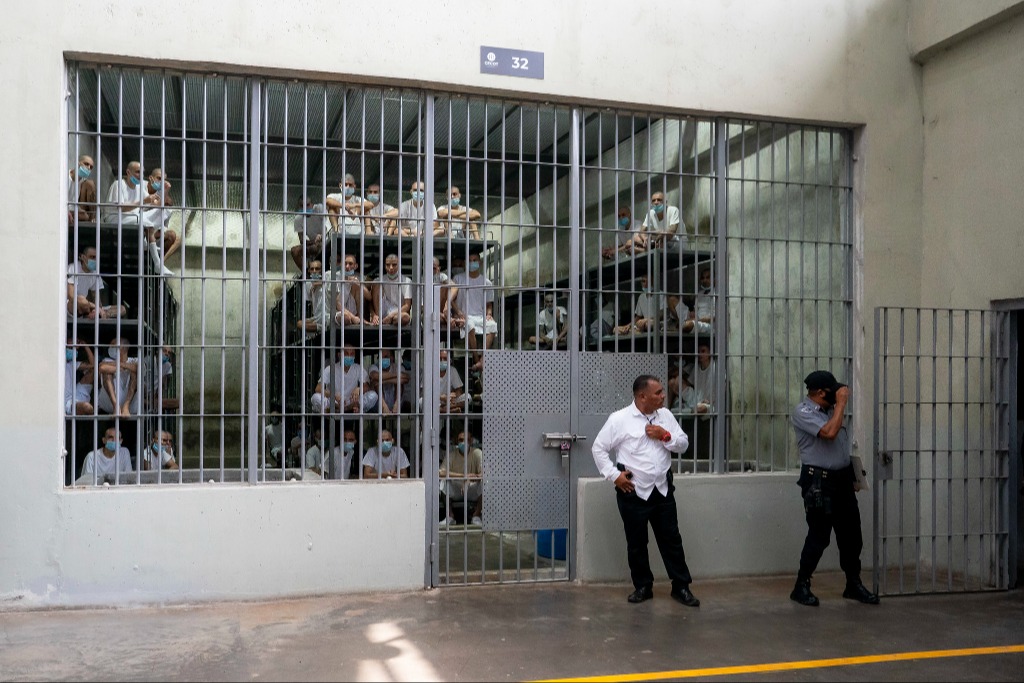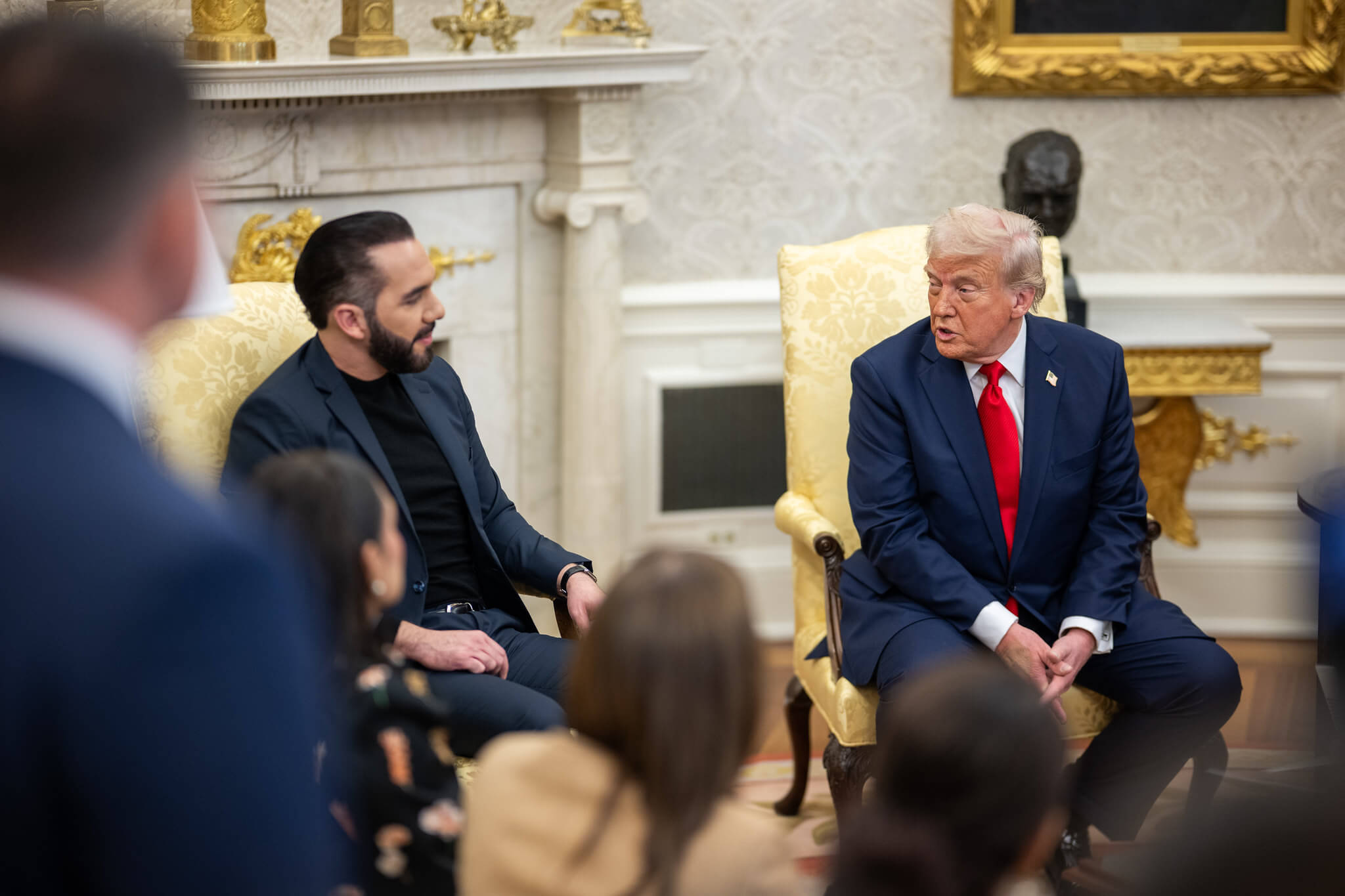Breaking Down the U.N.’s Report on Xinjiang
The U.N. finally released its report on human rights abuses in Xinjiang. What did the investigation uncover, and what’s next for the international community?

Published by The Lawfare Institute
in Cooperation With

The United Nations Office of the High Commissioner for Human Rights (OHCHR) released a long-awaited report Aug. 31 on Chinese government abuses in Xinjiang. Broadly, the report concluded that “serious human rights violations have been committed,” including “arbitrary and discriminatory detention of members of Uyghur and other predominantly Muslim groups,” which it asserted “may constitute international crimes, in particular crimes against humanity.”
The report follows years of attention by human rights groups and the international community over mounting evidence that the Chinese government has used ambiguous “anti-terrorism” and “anti-extremism” policies to justify the persecution of Uyghur and other Muslim-minority groups in the country’s western region of Xinjiang.
The release came shortly before midnight in Geneva on Aug. 31, just minutes before outgoing High Commissioner for Human Rights Michelle Bachelet officially departed her post. Bachelet has faced criticism in the final year of her tenure. She was often accused of being too forgiving in public statements on China’s human rights record. Her visit to China in May prompted swift backlash from Uyghur activists, who felt that Bachelet had given Beijing too much room to control the narrative and “repeated talking points from China itself, offering soft words that do not match … testimonies of survivors and families.” The State Department expressed similar concerns over efforts by the People’s Republic of China “to restrict and manipulate [Bachelet’s] visit.”
The OHCHR is hardly the first organization to document the extent of abuse, nor is it the first to suggest violations of international law. Several human rights organizations have compiled and reported evidence in recent years, producing conclusions to support accusations ranging from “crimes against humanity” to “acts of genocide.” The U.S. government has gone so far as to publicly assert its confidence in the veracity of both claims. An independent tribunal in the U.K. reached the same conclusion. Nonetheless, while the OHCHR’s report does not mention the term “genocide,” it strongly reinforces evidence to implicate the Chinese government in a series of serious human rights violations.
The OHCHR’s findings may spark new waves of pressure on U.N. officials to take further action and a more direct line of questioning toward Beijing over its practices in Xinjiang. Below is a review of key findings within the OHCHR’s report and considerations for its implications and possible next steps for the international community in addressing the issue.
Key Findings
Widespread Arbitrary Imprisonment
The report’s most substantive section on abuses in Xinjiang concerns the widely discussed imprisonment of Uyghur and other Muslim-minority ethnic groups. The report distinguishes between two forms of imprisonment, the first being punishment and confinement by traditional imprisonment and the second being so-called education and rehabilitation by placement in vocational education and training centers (VETCs). Contrary to the Chinese government’s name for such facilities, human rights groups, such as Human Rights Watch, have more bluntly referred to these locations as “political education camps.” According to the Chinese government, traditional imprisonment is reserved for “serious” acts, while “education and rehabilitation” is a more administrative route for “minor” acts. However, the OHCHR found that, broadly, “deprivations of liberty in residential facilities appear to have been without any apparent legal basis for a considerable period,” which fails to uphold standards of international human rights law. For example, arbitrary detention is prohibited by Articles 9 of the Universal Declaration of Human Rights and the International Covenant on Civil and Political Rights. The report reflects the declaration as “a norm of customary international law and peremptory norm of international law.”
The OHCHR found that reasons for referral to VETCs included “offenses” such as “having too many children, being an ‘unsafe person,’ being born in certain years, being an ex-convict, wearing a veil or beard, or having applied for a passport.” The report states that “the criteria for referral to VETC facilities are largely based on forms of ethnic, religious and cultural identity and expression.” Former detainees describe the legal process that led to “sentencing” as nothing more than a farce. Those interviewed by the OHCHR detailed “trials” that occurred within a VETC, where no legal arguments were made but, rather, individuals were told to “‘choose’ their offenses from a list of some 75 or 72 ‘crimes.’”
Descriptions of what occurred in these camps are particularly disturbing. Broadly, the report notes their “orientation towards political re-education,” where detainees were barred from speaking native Uyghur or Kazakh languages or practicing their religion, and were consistently forced to study and memorize approved political material. The report also descriptively details instances of torture and abuse of detainees during or in the transfer process to VETCs. Two-thirds of the 26 former detainees interviewed by the OHCHR for the report attested to experiencing some level of such treatment. The report details detainee accounts of being “beaten with batons, including electric batons'” while bound to a chair, having to endure solitary confinement for extended periods of time, and of “constant hunger and, consequently, significant to severe weight loss.” Furthermore, former detainees recounted undertaking nightly watch shifts to “ensure cellmates were not praying or otherwise breaking rules at night-time.” The report also detailed instances of sexual violence by guards against detainees, including during interrogations and humiliation that an interviewee described as taking place in public settings.
Beyond VETCs, the report also detailed an increase in traditional arrests, convictions, and “lengthy prison sentences” in Xinjiang from 2017 onward. Several cases include “the arrest and imprisonment, often on lengthy custodial sentences, of prominent scholars, artists, and intellectuals from the Uyghur community.” For any individual in China, an arrest on criminal charges almost always means conviction. The OHCHR report notes that China’s nationwide conviction to arrest rate in criminal cases is a staggering 99.9 percent. Specifically, in Xinjiang, the length of prison sentences began rising significantly in 2017. The report notes a jump from 10.8 percent of cases receiving longer than five-year sentences prior to 2017 to 87 percent in 2017. What is also concerning is the expansion of the size of prisons post-2019. While disputed, Beijing has asserted that VETCs have been closed since 2019. However, regardless of the truthfulness of this claim, the OHCHR report makes clear the “new construction or expansion of buildings … [is] likely to accommodate corresponding increases in detainees.” In other words, even if VETCs have been reduced in scope, the report questions whether the “deprivation of liberty detentions has shifted towards imprisonment.” If so, even with a reduction in the operation of VETCs (if true), there is little to suggest with certainty that China’s persecution of ethnic minorities in Xinjiang via arbitrary imprisonment has declined.
Severe Restrictions on Religious, Cultural, and Linguistic Expression
Broader government control over religious practices—particularly those of ethnic Muslim minorities—across Xinjiang is also discussed in the OHCHR report. Notably, access to religious material in Xinjiang is regulated. For example, “religious activities are allowed only in Government-approved locations, conducted by Government-accredited personnel, and on the basis of Government-approved teachings and publications.” These are significant limitations that not only constrain religious freedom but also could further expose individuals who choose to practice their religion outside of approved venues to persecution under China’s dubiously ambiguous definition of “extremism.”
To that end, the report notes the broad ambiguity of the term “extremism,” which China defines officially as “the distortion of religious teachings and the promotion of extremism, as well as other extremes of thought, speech and behavior such as the promotion of violence, social hatred and anti-humanity.” However, the OHCHR argues that these laws often correlate “primary expressions of extremism” with “an exceptionally broad range of acts that in themselves constitute exercise of protected fundamental freedoms connected to the enjoyment of cultural and religious life by these communities.” Yet the report says that, under such ambiguous and broad characterizations of “extremisim,” some of the fundamental religious expressions threatened include wearing a hijab, growing a beard, celebrating Ramadan, using the internet to discuss religious practices, and even “giving one’s child a Muslim name.”
The destruction of Islamic religious sites, including mosques, is also well documented. While not specified in the OHCHR report, the Australian Strategic Policy Institute found in 2020 that the Chinese government had destroyed approximately 8,500 mosques since 2017, which could account for nearly a third of those that the government says exist in the region.
Violations of Reproductive Rights
An accusation linked closely to the United States’ use of the term “genocide” to describe the abuses in Xinjiang is evidence of forced sterilization. While the report does not adopt the term “genocide,” it does recite some shocking statistics on the repression of reproductive rights in the region. Most notably, population data shows that the birth rate in Xinjiang dropped 48.7 percent between 2017 and 2019, from 15.88 per thousand to 8.14 per thousand—with Uyghur-majority areas representing a large portion of the decline. Figures also show a drastic increase in sterilization and intrauterine device (IUD) placement procedures throughout the region during the same time frame, which the report characterizes as “an unusually sharp rise in both forms of procedures.” For example, the number of sterilizations in Xinjiang was 243 per 100,000 inhabitants in 2018, versus 32.1 per 100,000 inhabitants across China.
Moreover, according to the report, “family planning violations were among the most common reasons for referral to a VETC facility.” Ethnic minority women interviewed during the OHCHR’s investigation asserted that they had been subjected to forced birth control, IUD placements, and sterilizations.
Forced Labor Practices
Last year, attention on forced labor in Xinjiang was subject to heightened international scrutiny—especially after the United States effectively banned imports from the region via the Uyghur Forced Labor Prevention Act. The bill made the presumption that all goods from Xinjiang would be assumed to be tied to forced labor unless the importer could present to U.S. customs officials sufficient evidence to the contrary. At the time, China claimed that forced labor was “non-existent” in Xinjiang.
However, the OHCHR’s report highlights connections between former detainees from VETCs and workers subsequently participating in labor schemes. They are often facilitated by the government, which the report notes raises concerns about the voluntary nature of such programs—particularly, as the “VETC system amounts to large-scale arbitrary deprivation of liberty through involuntary placements …. Individuals in the system are … under a constant ‘menace of penalty.’”
In a report released in mid-August, the U.N.’s special rapporteur on contemporary forms of slavery said that it was “reasonable to conclude that forced labour among Uighur, Kazakh and other ethnic minorities … has been occurring in the Xinjiang Uighur Autonomous Region of China.” The special rapporteur’s findings, in line with the OHCHR report, tie together two U.N. investigations highlighting the ongoing vulnerability of ethnic minorities to forced labor in Xinjiang.
China’s Response
Overall, the OHCHR’s report gives credence to the extensive work and collection of evidence presented by human rights groups and activists over recent years that has uncovered wide-ranging human rights abuses against ethnic minorities in Xinjiang. It is a rejection of China’s official narrative that government actions in the region constitute legitimate anti-terrorism practices.
China repeatedly encouraged the OHCHR to withhold the release of the report. It claimed that the report was an attempt to “smear China’s image”—even though Chinese government officials said that former High Commissioner Bachelet’s May 2022 trip to Xinjiang had been a success and that she had seen the “real Xinjiang.” However, upon the release of her office’s report, China took a much different stance in its response.
The OHCHR published a response on behalf of the Chinese government as an attachment to the official report, which consisted of a 122-page report of its own attempting to refute the U.N. report’s conclusions. The response demonstrated Beijing’s frustration with the report and repeatedly asserted that the OHCHR’s assessment was “based on disinformation and lies fabricated by anti-China forces.” Furthermore, China claims that the report “interferes in China’s internal affairs”—a line the government has long repeated amid accusations of human rights violations. The response declares, “With regard to the human rights situation in Xinjiang, no one has a better say than the Chinese people including the people of all ethnic groups in Xinjiang.” Of course, this statement ignores that the OHCHR report cites numerous pieces of evidence from interviews of former prisoners or direct sources from Xinjiang. The OHCHR report’s conclusions are very much a direct account of the experiences of the region’s citizens.
Broadly, while China’s response is extensive, it is also often ambiguous, making loose statements such as “[livelihood] programs have produced significant outcomes and won active support from people of all ethnic groups in Xinjiang,” without citing the source for research or polls that could lead to such a conclusion. Moreover, several portions of the response report cite Chinese domestic law that mentions human rights statutes, though they often fail to follow up with specifics demonstrating how or where the government took steps to ensure compliance in Xinjiang, other than broad assertions that actions were taken “in accordance with the law.” Again, despite these declarations, the OHCHR report provides direct evidence that contradicts the arguments made in China’s response, referencing specific cases that China fails to address in its response. Broadly, the consensus remains that the report is “a strong, clear accounting of China’s violence and oppression against Uyghurs” and a “game-changer for the international response to the Uyghur crisis.”
Next Steps for the U.N. and the International Community
Following the release of the OHCHR’s report, 60 Uyghur groups that are a part of the World Uyghur Congress, released a statement highlighting the significance of the U.N. report and making a series of suggestions for the next steps it would like to see taken by the international community on the issue. The first, notably, was a call to the U.N. Human Rights Council (HRC)—the whole member-state bloc for matters of human rights—to hold a special session or an urgent debate and establish a “Commission of Inquiry to independently examine the treatment of Uyghurs and other Turkic peoples.” Several human rights activists shared the call for action at the HRC, including Human Rights Watch China Director Sophie Richardson, who similarly called for an investigation by the council into “crimes against humanity targeting the Uyghurs and others—and hold those responsible to account.” On Sept. 7, 45 independent U.N. experts endorsed the OHCHR report’s recommendations and called on the HRC to hold a special session and to consider creating a special mandate of experts “to closely monitor, analyse and report annually on the human rights situation in China.” The experts also suggested that the U.N. General Assembly or secretary-general appoint a special envoy.
While the report and growing attention to the issue will put added pressure on the U.N. and its member-states to act, the likelihood of action by the HRC remains uncertain, since China is a member and has built significant political influence among the body in recent years.
Over the past year, large portions of the international community have repeatedly expressed concern over the occurrence of abuses in Xinjiang. The G7 Leaders’ Communiqué; joint statements by the U.S., the U.K., and Canada; and strong stances taken by Japan and Australia in Asia have all contributed to public pressure on Beijing over practices in Xinjiang. Congress and the Biden administration have taken significant action over the past year to sanction individuals connected to human rights abuses in Xinjiang and to work toward legislative action to remove products possibly tied to forced labor practices from entering circulation in the U.S. markets. The Uyghur Forced Labor Act took effect in June and may cause some companies to reexamine and apply additional scrutiny to their supply chains. Regardless, states should continue to seek greater transparency from China and bolster efforts for a broader dialogue on improving human rights conditions in Xinjiang and beyond.





